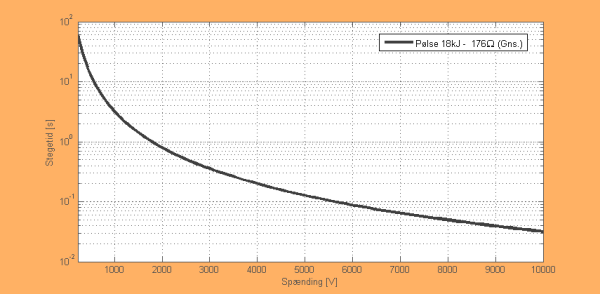Table of Contents
Bratwurst Vending Machine
The idea is a vending machine that can cook a sausage with raw electric power.
Initial testing
Mesuring resistance of a frozen sausage: :projects:bratwurst-machine
114,5 kΩ
Tests
Several sausages has been fried using 230V/50Hz. One test was using two forks put into the ends of the sausage. The power was on for aprox. 60s. The plot of the power and real impedance over time is:
Notice that the enery needed is just about 18kJ, that was our actual initial guess.
However the computed impedance is lower by a factor of 1000 compared to the tests with multimeters. This indicates some semiconductor behavior.
Basic calculations
Energy is E = P*t
Power is U^2/R
Thus the time to fry the sausage is t = E*R/(U^2)
Asuming a sausage has a (aerage) resistance of 176Ω and needs 18kJ of energy, the folowing plot can be constructed:
Observe that the one-second barrier is broken at 1700V.
Inspiration
Food Electronics (stub)
Inspired by the sausage vending machine, why not use food to make electronic components? For example, the previous measurements indicates that the sausage is not a conductor and neither an insulator. Hence, it must be some kind of semi-conductor, which means that it might be possible to create diode-type compontent; like transistors. That is, sausage-transistors…
A few challenges exists like determining the majority carriers in a sausage. E.i. does the sausage-patty have a surplus of electrons or holes (n or p-type semiconductor). Likewise the resistivity has to be determined.
np-determination: http://en.wikipedia.org/wiki/Hot_point_probe
Resistivity determination: http://en.wikipedia.org/wiki/Resistivity

